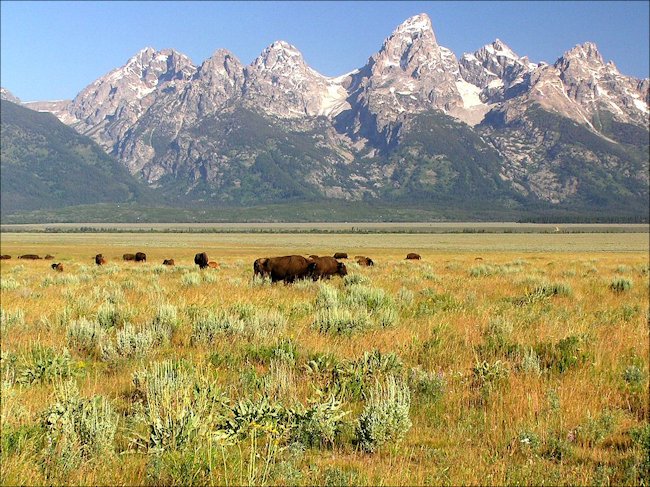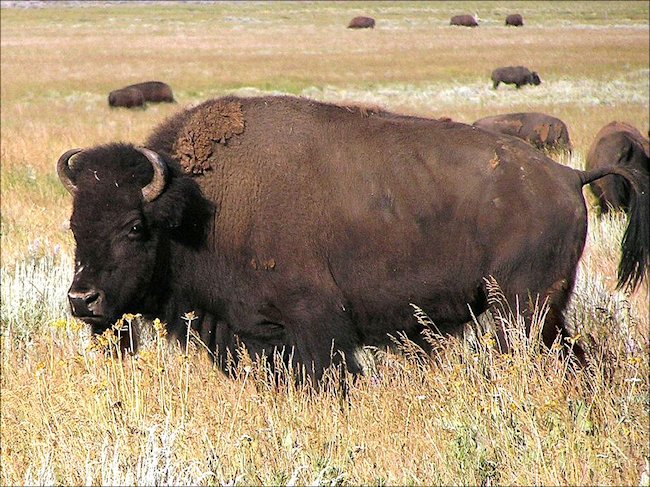Grand Teton National Park Buffalo
The American Bison is more commonly known as a Buffalo. Grand Teton National Park has a large herd of Buffalo that graze the acres of grass that spread out in fornt of the magnificent Teton mountain range. It is like being in an old cowboy movie before the railways came and hunters like Buffalo Bill slaughtered thousands of these magnificent nearly to extinction to feed the workers.

They used to cover a huge area of land but now are reduced to a few National Parks. Moves are a foot to reintroduce them to other areas of north America. About 4,000 ranchers are farming them commercially. Buffalo meat tastes good. There hides are also used.
Because they have to endure very cold winters they grow a thick warm coat each year. Some buffalo look very scruffy when they moulting their winter coat. Both males and females have horns which they can use to defend themselves and their young from wolves. The males use them during the August to September mating season to fight each other for breeding rights. The Buffalo’s gestation is around 285 days. If she does not get pregnant again she will nurse her calf for about 18 months but if a new calf is born the following year then it has to fend for itself after a year. Male buffalo pay no part in looking after the calf.
Buffalos eat huge amounts of grasses and sedges each day. They normally go though a cycle of 2 hour periods of grazing, resting and then cud chewing before moving to a new location to start again. Buffalo live for about 15 years in the wild but in captivity they can live for up to 25 years.

The scientific name of the American Buffalo is Bison Bison. The term Buffalo comes from the large European and African water buffalo. The French trappers called the American Bison a Buffalo. The name stuck but purists still insist that its correct name is Bison. I think Bison Bill sounds wrong. It was Buffalo Bill not Bison Bill.
In the spring and summer it is important that the Buffalo shed its winter coat. It gets hot on the prairies. Dust baths help with the molt and have the added benefit of getting rid of annoying insects.
It has been established that Buffalo were not natives of North America. They came over the Bering Strait from Europe about 10,000 years ago when the two continents were joined. People followed these migrating herds and became what is now known as native Americans or more commonly as American Indians. These tribes developed methods to hunt Buffalo including herding them over cliffs. They did not have the luxury of riding horses as there weren't any until they were imported by the Spanish and later invaders.
Buffalo were hunted nearly to extinction. There were only a few hundred left by the mid-1880s. The US Army actively encouraged the slaughter of buffalo herds as part of US government policy. They wanted to weaken the hostile North American Indian population by removing their main food source and to pressure them onto the reservations. Without the buffalo they were forced to leave the land or starve to death. Buffalo skins were used for clothing and rugs. They were also used for industrial machine belts as it was strong and lasted a long time. Many Buffalo hides were exported to Europe.
Travel books

